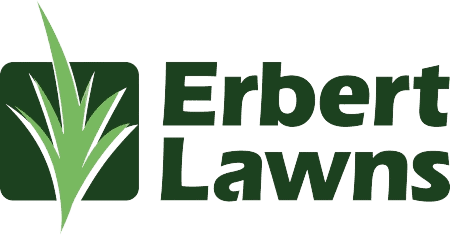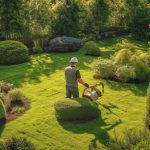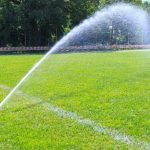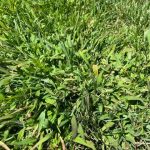In a world where the harmony between technology and nature defines our living spaces, as the green canvases of our homes evolve, as does the art and science of nurturing them. Erbert Lawns stands at the forefront, peering into the horizon of lawn care advancements. The future beckons with innovations that promise not just to maintain but to revolutionize our green spaces. From eco-friendly practices to smart technology integration, the landscape of lawn care is on the brink of a transformative era.
- Key Takeaways
- 1. Eco-Conscious Care
- 2. Smart Technology Integration
- 3. Customized Lawn Health Plans
- 4. Community and Urban Gardening
- 5. Environmental Education and Advocacy
- The Rise of Precision Lawn Care
- Green Technology in Lawn Equipment
- Enhancing Biodiversity with Native Landscaping
- The Role of Community in Sustainable Lawn Care
- Education and Empowerment
- In Conclusion
- Frequently Asked Questions
Key Takeaways
- Precision is Paramount: Tailored lawn care plans, based on data analytics and AI, ensure optimal health and sustainability of your lawn.
- Eco-Friendly Equipment: The transition to battery-powered and solar-powered lawn care tools reduces carbon emissions and noise pollution.
- Native Landscaping: Incorporating native plants and reducing lawn sizes promote biodiversity, supporting local wildlife and reducing water usage.
- Community Engagement: Sustainable lawn care thrives on community involvement, from shared resources and knowledge to collective action for greener practices.
- Continuous Education: Staying informed and adaptable is key to embracing the future of lawn care, with a focus on sustainability, technology, and community.
The journey of lawn maintenance is an ever-green tale, weaving through the threads of innovation and tradition. As environmental consciousness grows and technology advances, the trends shaping the future of lawn care are both exciting and sustainable. Here’s a look at what’s on the horizon:
1. Eco-Conscious Care
The drumbeat for sustainable practices grows louder each day, and lawn care is no exception. The future points towards organic fertilizers and native plantings that reduce water usage and chemical runoff. These practices not only nourish the soil but also promote biodiversity.
- Water Conservation: Techniques like drought-resistant landscaping (xeriscaping) and efficient irrigation systems are gaining traction. Resources like the Environmental Protection Agency offer insights into water-efficient practices.
- Organic Fertilizers: Moving away from synthetic options, organic fertilizers improve soil health over time. The National Association of Landscape Professionals provides guidelines on sustainable lawn care practices.
2. Smart Technology Integration
The digitization wave has reached the shores of lawn care, with smart technologies making grounds maintenance more efficient and less labor-intensive.
- Automated Lawn Mowers: Robotic mowers, which can be scheduled and controlled via smartphone apps, are cutting the effort out of lawn maintenance.
- Irrigation Tech: Smart irrigation systems, like those detailed by the Irrigation Association, optimize water usage based on weather data and soil moisture levels.
3. Customized Lawn Health Plans
Understanding that each lawn has its own identity and needs, tailored lawn health programs are becoming the norm. Erbert Lawns’ bespoke services (Lawn Care Programs) are designed to meet the unique requirements of your green space.
4. Community and Urban Gardening
As urban areas expand, the integration of green spaces within cityscapes becomes crucial. Community gardens and green roofs are not just trends but necessities for the future.
- Urban Gardening: The American Community Gardening Association advocates for the development of community gardens, which contribute to health and biodiversity.
5. Environmental Education and Advocacy
Knowledge is the seed of change. Increasing awareness about the environmental impact of lawn care practices is key. Erbert Lawns is committed to educating homeowners and communities on sustainable lawn care through resources like our blog and service pages such as Weed Control and Lawn Aeration.
The Rise of Precision Lawn Care
The days of one-size-fits-all lawn care are fading into the sunset. In their place, precision lawn care, powered by data analytics and AI, is making its mark. This approach involves analyzing various data points about a lawn, such as soil condition, grass type, and local climate patterns, to create a highly customized care plan.
- Soil Health Monitoring: Tools that assess soil moisture levels and nutrient profiles in real-time allow for tailored watering and fertilization schedules. This precision not only optimizes lawn health but also conserves resources.
- Disease and Pest Prediction: Predictive models can now forecast disease and pest outbreaks before they become visible. By proactively treating these issues, we can maintain lush, healthy lawns with minimal chemical intervention.
Green Technology in Lawn Equipment
The green revolution is also transforming lawn equipment. Battery-powered tools are replacing their gas-guzzling predecessors, significantly reducing carbon emissions and noise pollution. These eco-friendly alternatives, from mowers to leaf blowers, are not only better for the environment but also easier to maintain.
- Electric Mowers: With advancements in battery technology, electric mowers now offer power and runtime that rival gas mowers, without the emissions.
- Solar-Powered Tools: Innovations are on the horizon for lawn care tools that can be powered by solar energy, further reducing the carbon footprint of maintaining a lawn.
Enhancing Biodiversity with Native Landscaping
The future of lawn care also embraces the beauty and ecological benefits of native plants. By incorporating native species into our landscapes, we support local wildlife, including pollinators like bees and butterflies, which play a crucial role in our ecosystem.
- Pollinator-Friendly Gardens: Creating spaces within lawns for flowers and plants that attract pollinators not only enhances biodiversity but also adds vibrant colors and textures to the landscape.
- Reducing Lawn Sizes: A trend towards reducing grassy areas in favor of native plant beds and edible gardens can conserve water and promote a more diverse ecosystem.
The Role of Community in Sustainable Lawn Care
The future of lawn care is not just about technology and techniques; it’s also about fostering a sense of community. Sharing knowledge, resources, and even services can lead to more sustainable practices and stronger connections between neighbors.
- Community Composting: Shared composting programs can turn yard waste into valuable organic matter, enriching the soil naturally and reducing landfill waste.
- Lawn Care Co-ops: Neighbors pooling resources to invest in high-quality, eco-friendly lawn care equipment or services can lower costs and environmental impact for everyone involved.
Education and Empowerment
As we look ahead, empowering homeowners and communities with knowledge about sustainable lawn care practices is crucial. Erbert Lawns is committed to leading this charge, offering workshops, online resources, and personalized consultations to demystify eco-friendly lawn care and replacement make it accessible to all.
- Workshops and Webinars: Engaging the community through educational events can spread awareness about sustainable practices and inspire collective action towards greener lawns and communities.
- Online Resources: A wealth of information, from how-to guides to troubleshooting tips, can be made available to help homeowners make informed decisions about their lawn care.
The path forward for lawn care is clear: embrace technology, respect the environment, and cultivate community. Erbert Lawns is not just watching these trends unfold; we are actively participating in and contributing to the evolution of lawn care. From leveraging smart technology to fostering biodiversity and educating the community, we are committed to ensuring that the future of our lawns is as bright and sustainable as possible.
As we continue to navigate the changing landscape of lawn care, the importance of staying informed and adaptable cannot be overstated. The trends highlighted above are just the beginning. Continuous innovation and a commitment to sustainability will drive the evolution of lawn care practices, ensuring that our lawns not only add beauty to our homes but also contribute positively to the environment and our well-being.
In Conclusion
The future of lawn care is lush with potential. It invites us to embrace innovation, sustainability, and community. At Erbert Lawns, we’re not just observing these trends; we’re actively participating in shaping the future of our lawns. We encourage you to join us in this green revolution. Reach out to Erbert Lawns today, and let’s cultivate a future where our lawns are not only beautiful but sustainable and smart.
Frequently Asked Questions
What is the most eco-friendly way to maintain my lawn?
Eco-friendly lawn maintenance involves using organic fertilizers, planting native species, and adopting water-saving practices like xeriscaping.
Can smart technology really make a difference in lawn care?
Absolutely. Smart irrigation systems and robotic mowers can significantly reduce water usage and the need for manual labor, making lawn care more efficient and environmentally friendly.
How often should I fertilize my lawn?
It depends on your soil type and the kind of grass you have. Generally, it’s recommended to fertilize your lawn 2-4 times a year. Tailored plans, such as those offered by Erbert Lawns, can provide guidance specific to your lawn’s needs.
Is xeriscaping only suitable for arid climates?
While xeriscaping is especially beneficial in dry climates, its principles can be applied anywhere to reduce water usage and maintenance. It focuses on using drought-resistant plants and efficient irrigation.
How can I reduce the environmental impact of my lawn?
Choosing organic lawn care products, reducing chemical usage, and implementing efficient watering practices are key steps. Educating yourself on sustainable practices is also crucial.
What services does Erbert Lawns offer to help with these trends?
Erbert Lawns offers a range of services, including Lawn Aeration, Weed Control, and tailored Lawn Care Programs that align with these future trends.










